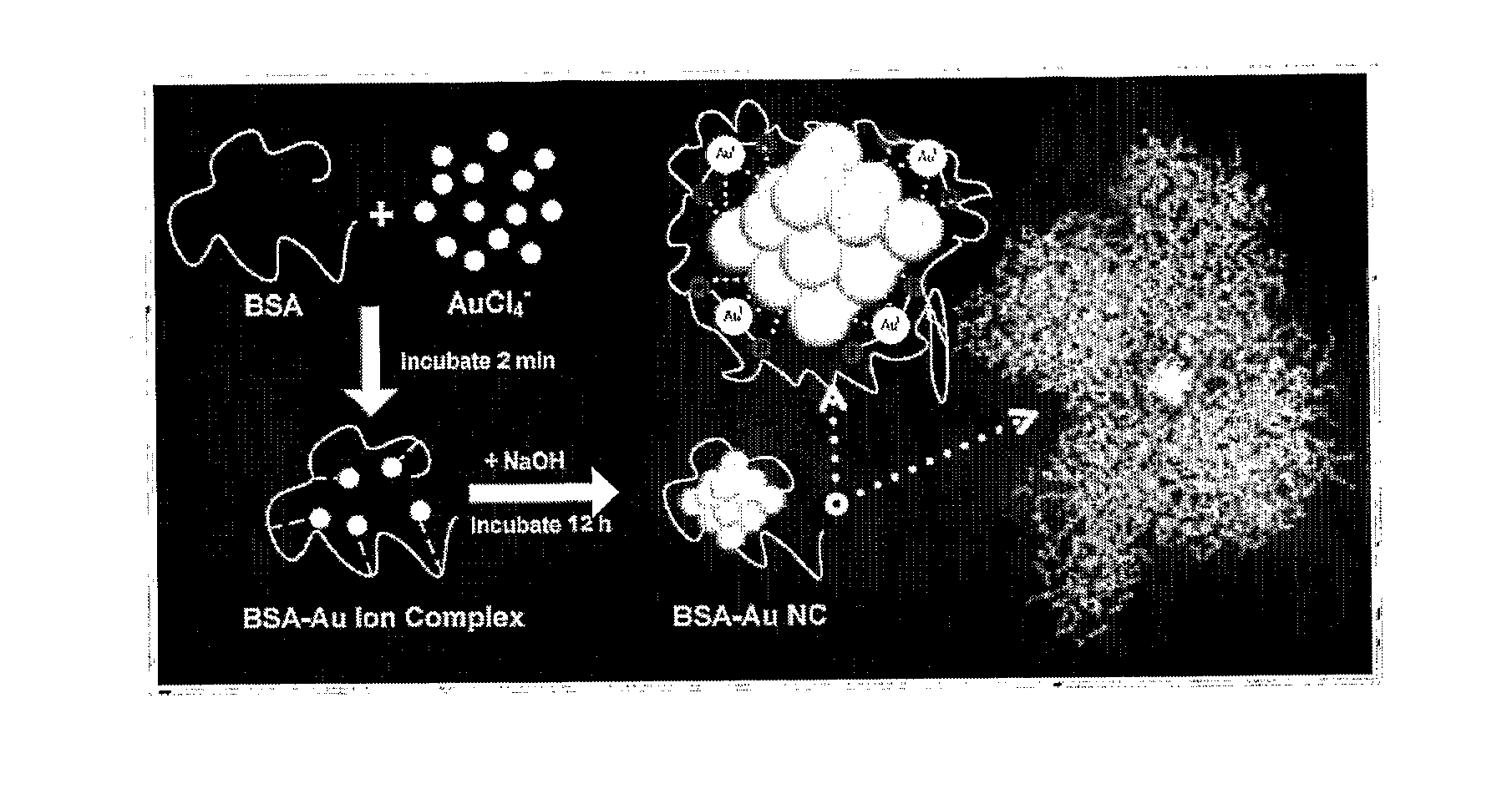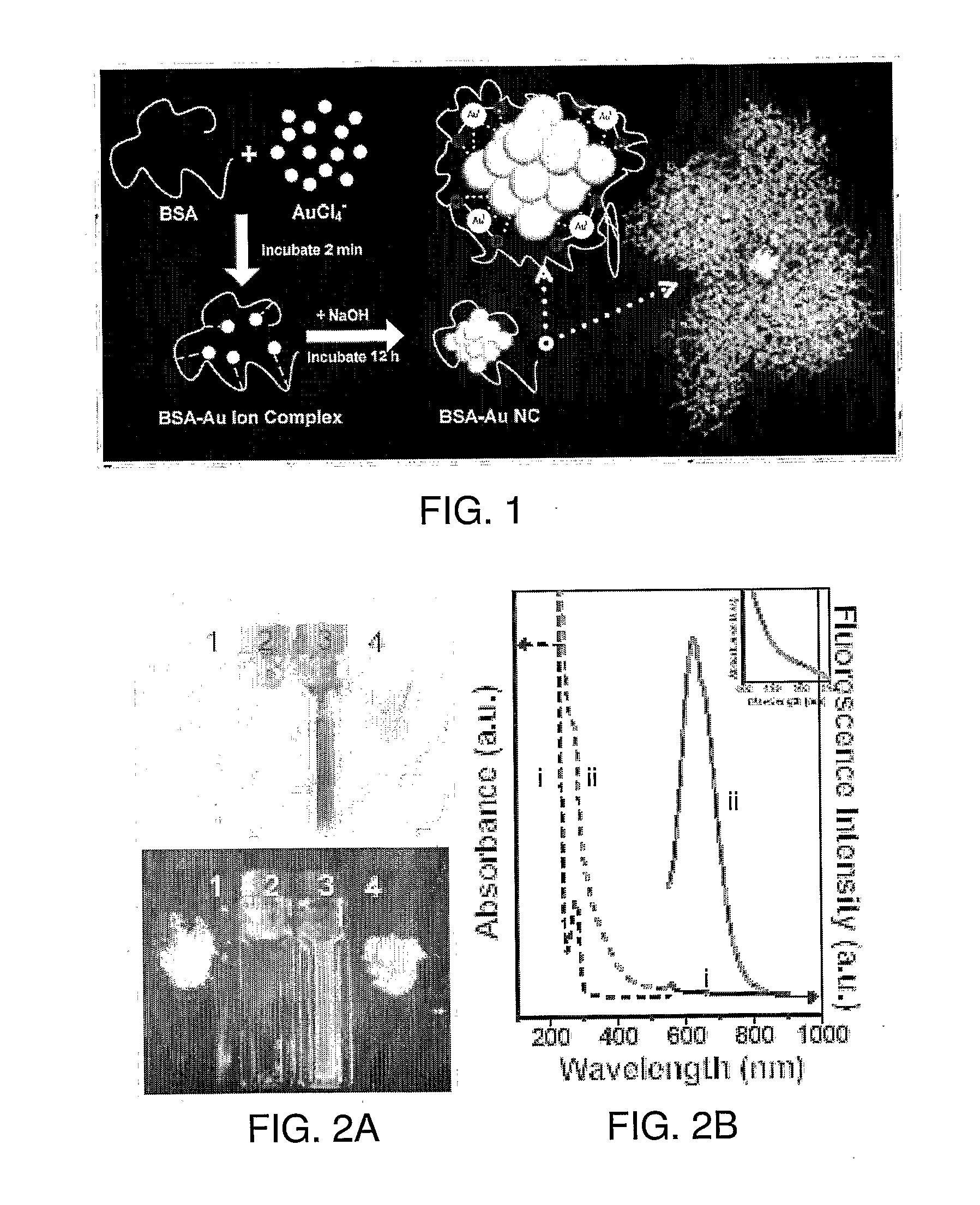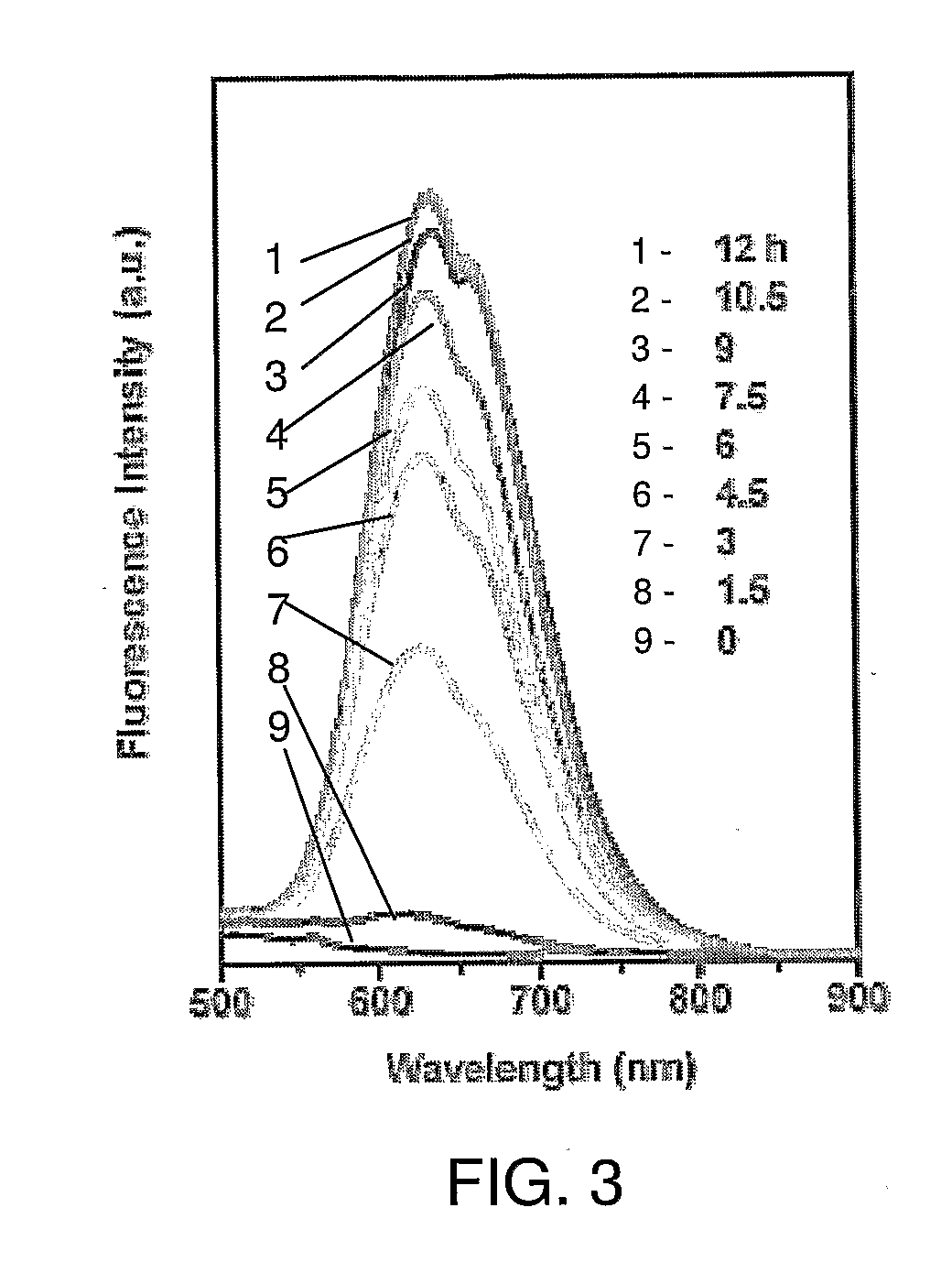Methods, compositions, and articles comprising stabilized gold nanoclusters
- Summary
- Abstract
- Description
- Claims
- Application Information
AI Technical Summary
Benefits of technology
Problems solved by technology
Method used
Image
Examples
example 1
[0070]The following example describes the synthesis and properties of gold nanoclusters, according to some embodiments of the present invention.
[0071]Specifically, this example describes a simple, one-pot, “green” synthetic route, based on the biomineralization capability of a common commercially available protein, bovine serum albumin (BSA), for the preparation of Au-NCs at the physiological temperature (37° C.) with red emission (λem max=640 nm, quantum yield (QY) ˜6%). In this example, Au(III) ions are added to an aqueous BSA solution. The BSA molecules, in some cases, sequestered Au ions and entrapped them (see FIG. 1). The reduction ability of BSA molecules was activated by adjusting the pH of the reaction mixture to about 12; the entrapped ions underwent progressive reduction to form BSA conjugated gold nanoclusters (BSA-Au-NCs) in situ. The as-prepared BSA-Au-NCs comprised of about 25 gold atoms (as evident from matrix-assisted laser desorption / ionization-time of flight (MALD...
example 2
[0080]The following example describes additional experimental information regarding the gold nanoclusters prepared and used in Example 1.
[0081]All chemicals were purchased from Sigma-Aldrich and used as-received. Ultrapure Millipore water (18.2 M) was used.
[0082]Synthesis of Red Fluorescent Au-NCs. All glassware was washed with aqua regia (HCl:HNO3 volume ratio=3:1), and rinsed with ethanol and ultrapure water. In a typical experiment, aqueous HAuCl4 solution (5 mL, 10 mM, 37° C.) was added to BSA solution (5 mL, 50 mg / mL, 37° C.) under vigorous stirring. NaOH solution (0.5 mL, 1 M) was introduced 2 min later, and the reaction was allowed to proceed under vigorous stirring at 37° C. for 12 h.
[0083]Materials Characterization. Absorption and photoemission spectra were obtained with an Agilent 8453 UV-visible spectrometer and a Jobin Yvon Horiba Fluorolog fluorescence spectrometer, respectively. DLS analyses of aqueous BSA-Au-NC and BSA solutions were performed with a BI-200SM laser li...
example 3
[0084]The following example describes the detection of mercuric ions (Hg+2) using gold nanoclusters, according to a non-limiting embodiment of the invention. Routine detection of mercuric ions (Hg2+) is an important aspect of environmental monitoring in aquatic ecosystems because of its deleterious effects on the environment and human health.
[0085]Without wishing to be bound by theory, recent theoretical studies suggest that dispersion forces between closed shell metal atoms are highly specific and strong, and greatly magnified by relativistic effects, particularly when these interactions involve heavy ions such as Hg2+ (4f145d10) and Au+ (4f145d10). The use of Hg2+—Au+ interactions is therefore attractive for a label-free approach in Hg2+ detection. As described in Example 1, gold nanoclusters (BSA-Au-NCs) were synthesized using a protein-templated method. The as prepared BSA-Au-NCs comprised of about 25 gold atoms (Au25), and emitted intense red fluorescence (λem max=640 nm). The ...
PUM
 Login to View More
Login to View More Abstract
Description
Claims
Application Information
 Login to View More
Login to View More - R&D
- Intellectual Property
- Life Sciences
- Materials
- Tech Scout
- Unparalleled Data Quality
- Higher Quality Content
- 60% Fewer Hallucinations
Browse by: Latest US Patents, China's latest patents, Technical Efficacy Thesaurus, Application Domain, Technology Topic, Popular Technical Reports.
© 2025 PatSnap. All rights reserved.Legal|Privacy policy|Modern Slavery Act Transparency Statement|Sitemap|About US| Contact US: help@patsnap.com



